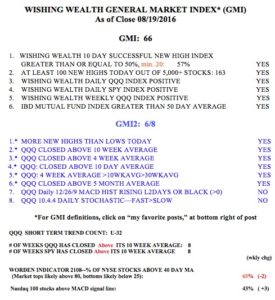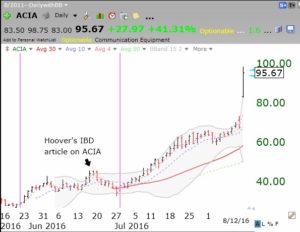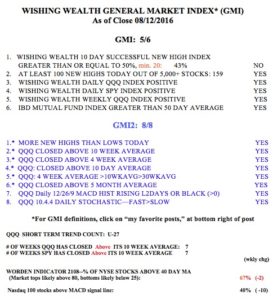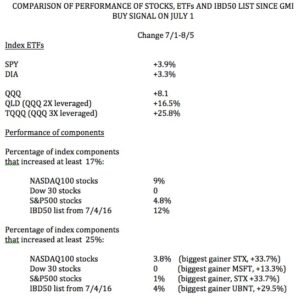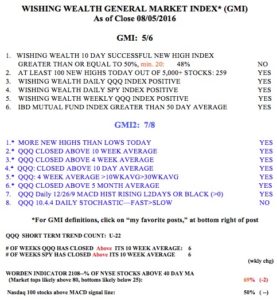The GMI2 is only 6 of 8 because the QQQ daily stochastic and MACD indicators are weakening. Traditional September slump on horizon?
General Market Index (GMI) table
How to find a roaring IPO growth stock like $ACIA early–try reading #IBD
Everyone now knows that ACIA, now at $95, was a great IPO to buy at $40. Who would have known back then? Try Ken Hoover at IBD, who wrote about ACIA last June. This is why I have been reading IBD since the 80’s.
Meanwhile the GMI remains at 5 (of 6).
Since GMI buy signal on 7/1 $TQQQ beats all index ETFs, most individual stocks and #IBD50 stocks–yet again
It just is not worth it for me to try to find in advance the rare stock that will beat the 3X leveraged NASDAQ 100 ETF, TQQQ.
Fewer then 5% of the stocks in the DOW, SPY, QQQ and IBD50 list from 7/4 beat the performance of just holding the TQQQ since the GMI Buy Signal on July 1 (+25.8%). Even the more conservative QLD (2X leveraged) does better. How many times must I repeat this analysis before I change my approach. The best strategy is for me to wade into TQQQ after a GMI Buy Signal. Trying to find the rare stock that will beat the TQQQ is a fool’s errand, just to satisfy one’s ego. The goal is to have the best chance of making money, not to hit the very rare lottery.
The GMI remains on a Buy Signal at 5 (of 6).
